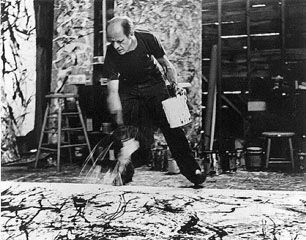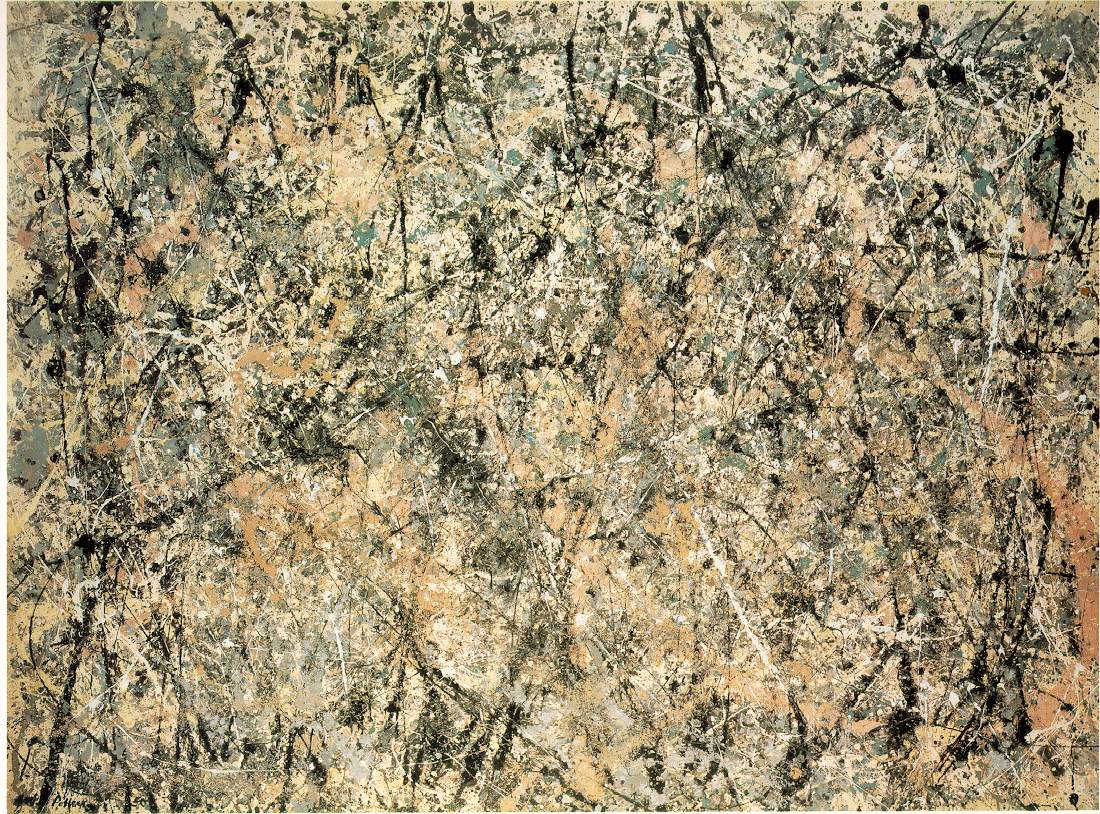This film was different from the others in the way that we got an up close view of how the artist painted. In the movie about Dali, we saw him paint a little, but not the same way we saw Pollock paint in this film. Kim Evans delivered information in many different ways. Personally, I thought the most effective was the clip of Pollock painting on glass with a camera under it. It was truly very interesting to see the technique of painting he did. I would say that the interviews with Pollock were the next most effective way Evans delivered information, followed by interviews with other artists, images of Pollock’s paintings, and finally Pollock’s own narration.
When Patsy Southgate described a “Macho Modernist” she talked of men whose manhoods were threatened because of the fact that they were creating art instead of settling down with a family like many other men were doing after World War II. They were doing something “delicate” and therefore had to overcompensate by being macho. These men drank a lot and lived dangerously. They were constantly drunk and partying. Often, they drank and drove. They were strong, ugly men who ended up becoming alcoholics and fighting bouts of depression. I personally find this overcompensation and lifestyle interesting, but also slightly frightening. They put their lives in danger because they felt like what they were doing wasn’t man enough. This is all very unfortunate. However, I truly enjoy Pollock’s artwork, and I feel like if he weren’t trying to be “macho” it wouldn’t be quite the same.
Peggy Guggenheim was a patron of Pollock’s art. She was one of the first people to show and commission artwork from Pollock. Clement Greenberg was an art critic who was one of the very first people to publish work that praised Pollock’s art. Lee Krasner was an artist who later became Jackson Pollock’s wife. Hans Namuth filmed Pollock painting from under a sheet of glass. This filming caused a lot of tension for Pollock which ended up causing him to drink again. He was losing inspiration and though Pollock wanted to move forward, he could not figure out how. Overall, this film impacted Pollock in a way that would change him and his art forever - and not in a positive way.
Question: Do you think Pollock was correct when he thought that the unconscious is where art comes from?




After reading this post, I honestly believe that you answered each question throroughly. I feel that just by reading this post while simultaneously looking at the pictures, I could get a brief background of the documentary without viewing it first. Not only did you offer the answer to each question, but you added your own opinion to each. The answers were easy to follow.
ReplyDeleteTo answer your question, I honestly do think that Pollock was correct in his observation. I say this from personal experience. I'm a writer and most of my ideas do in fact come to me in dreams. It's when I'm not thinking about these ideas or concepts that they just appear in my dreams. In a sense, I write so much that I rarely think about what to write about, it just comes to me naturally. It's like I already knew about it in some way. When thinking in this way, I can clearly see why he made this observation. Sometimes you have to experience things in order to believe it.
I disagree, I do not think that all art comes from the unconscious. I never remember my dreams, and as a photography, I thrive on things that I see. I gain my inspiration from the world around me. I do think it has a great deal to do with what kind of art is being produced. I know many writers get ideas through dreams, and even painters see things in their dreams that they chose to paint. I think it a lot of it has to do with the individual person and the type of art they create.
ReplyDelete